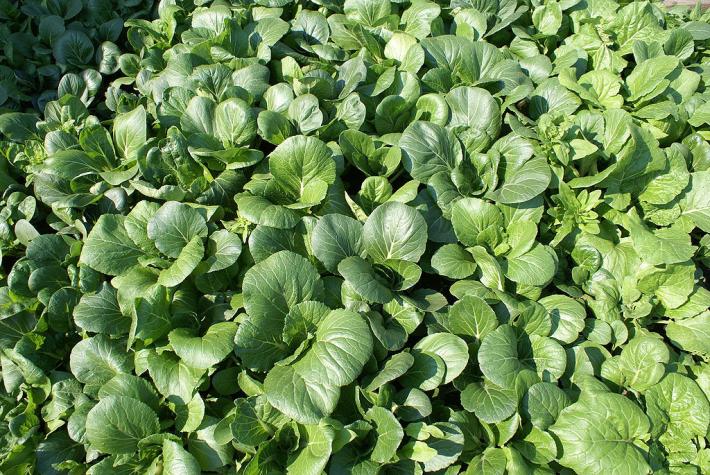Writer
Linda GeistCOLUMBIA, Mo. – The warm, sunny days and cool nights of fall in Missouri provide ideal growing conditions for cool-season vegetables such as Chinese cabbage, said University of Missouri Extension horticulturist David Trinklein.
“The Chinese cabbage group, which includes napa and bok choy, grows best under short days with temperatures between 60 and 70 degrees,” Trinklein said.
It tolerates cold temperatures but not heat. Temperatures above 75 degrees tend to cause bitterness and soft heads in Chinese cabbage. When it grows primarily in hot weather, it forms a flower stalk rather than a head.
Sow Chinese cabbage seeds in flats or pots in a soilless germination medium to transplant. Place containers in a protected location with morning sun and afternoon shade. Fertilize and water young plants as needed.
Or you can wait until late August to sow seeds directly in the garden. However, soil may crust from overhead irrigation or pelting rains. This usually leads to poor germination. If possible, lightly water seeds sown directly in the garden daily to keep the soil moist and cool and improve germination.
Most Chinese cabbage varieties need about three to four weeks to become large enough to transplant and another 65-70 days before harvest. Mature heads can endure light frosts but not severe freezes.
Soil considerations for Chinese cabbage are much the same as for regular cabbage, said Trinklein. Choose soil with good structure, fertility and water-holding capacity. Chinese cabbage prefers soil with a pH in the 6.0 to 6.2 range.
Timing and application of nitrogen is important. If you make a pre-plant application of fertilizer, side-dress with nitrogen at 10-day intervals after transplanting or thinning. Too much nitrogen leads to lush vegetative growth prone to disease.
Insect control on Chinese cabbage plants is important in late summer. Cabbage worms can quickly devour the young, tender plants. Leaf damage at this early stage also can slow growth. If damaged excessively, young plants may not have time to recover and form heads before cold weather arrives.
Chinese cabbage is ready to harvest when heads are firm and compact. Harvest by cutting the entire plant just above the soil line. Store up to six weeks in a plastic bag in the crisper compartment of a refrigerator.
Photo:
https://commons.wikimedia.org/wiki/File:Bok_Choy.JPG
Bok choy, a type of Chinese cabbage. Photo by JS, CC BY-SA 3.0, via Wikimedia Commons.
